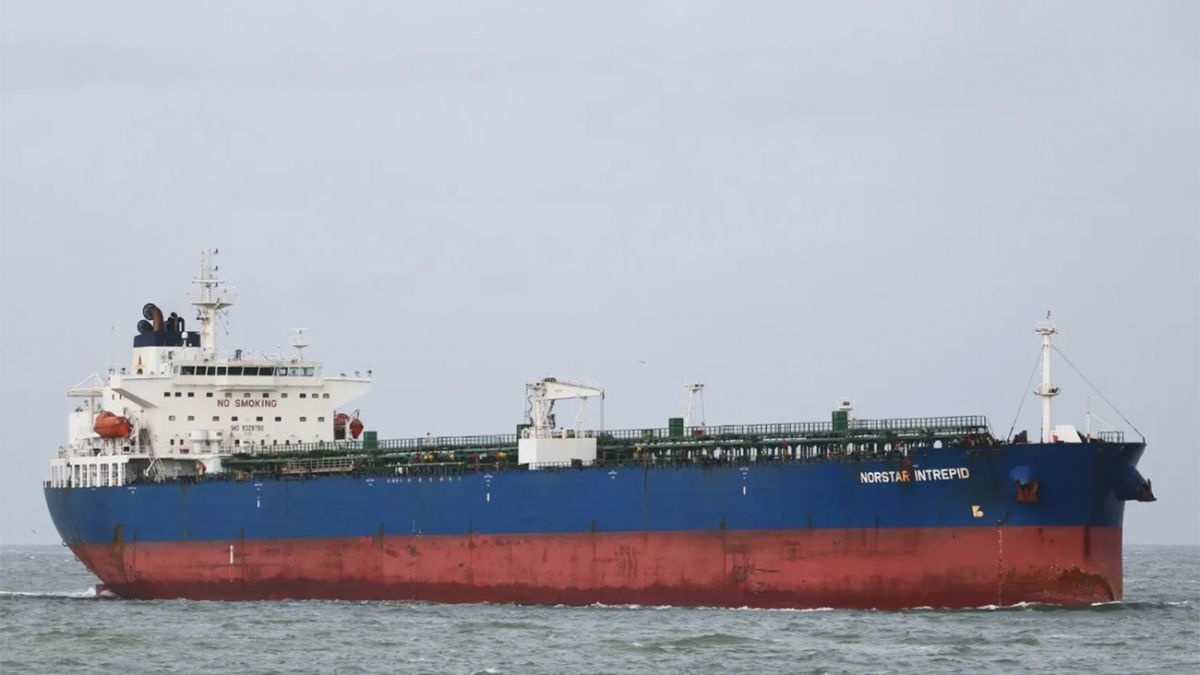Russia’s “Underwater War”? Portuguese Aircraft Tracks Moscow’s Oceanographic Vessel Fearing Cable Sabotage

A Portuguese Air Force aircraft monitored and tracked a Russian oceanographic vessel after it allegedly entered the Portuguese Exclusive Economic Zone (EEZ) on January 18 amid widespread concerns regarding undersea cable sabotage that have been largely attributed to Russia.
The Portuguese Air Force said in a statement: “An Air Force aircraft monitored January 18, a Russian Federation ship crossing in the Portuguese Exclusive Economic Zone.”
The Air Force said that the military aircraft was tasked with monitoring an oceanographic research vessel belonging to Russia, which had the ability to operate submersible vehicles for marine exploration at great depths.
This operation was carried out while the Air Force was on a routine mission to ensure maritime space protection. The service did not name the Russian vessel or the Portuguese aircraft deployed to monitor it.
“The mission reinforces the surveillance of the strategic space of national interest, ensures a constant and attentive presence to movements in the area of national interest, and contributes to the safety and protection of waters under Portuguese responsibility,” the statement emphasized.
The development comes days after the Portuguese Navy announced earlier this month that it had been monitoring five Russian warships that were passing near the country’s coastline. According to reports in local media, the ships were escorted by the Portuguese Navy on multiple occasions during that time.
There has been an increase in Russian maritime activity near Portugal in recent months, as underlined by the country in November 2024. Speaking to Euronews at the time, Major General João Vieira Borges, President of the Portuguese Military History Commission, said, “Because we’re in the Atlantic, and from the Atlantic, they go to the Baltic, and from the Baltic, they can also go to the Arctic or directly from here. So this movement is normal.”
However, the movement of these ships has become particularly concerning amid repeated incidents of attacks on undersea cable infrastructure in international waters.

The NATO alliance has accused Russian ships of meticulously planning and carrying out these illegal activities. In recent months, Portugal has enhanced patrol activities to monitor Russian ships’ activities. The Portuguese Air Force’s F-16M fighters flew more than 1,000 hours of air policing missions in 2024, as per reports.
Critical Undersea Cables Are Under Attack
There have been multiple sabotage attempts on European critical undersea communication lines in the last two years. The Baltic region, for one, has become a hotspot for such activities since Russia invaded Ukraine in February 2022.
However, these sabotage attempts are not limited to the Baltic. For example, three undersea cables running across the Red Sea were allegedly attacked and severed by Yemen-based Houthi militia in March 2024. Similarly, multiple undersea telecommunication cables were allegedly cut in southern France in two coordinated incidents in April and October 2022.
More recently, the Estlink 2 submarine cable, which transmits electricity between Finland and Estonia, was severed on Christmas Day 2024. Finland suspects that the Russian ship ‘Eagle-S’ which was en route to Egypt from Russia, was responsible for the attack. Officials alleged that the tanker’s anchor may have caused the damage.
A similar sabotage was reported in Swedish territorial waters in October 2023 when an undersea cable connecting Sweden and Estonia was damaged.

China has also received flak for alleged undersea cable sabotage. For instance, in October 2023, a natural gas pipeline between Finland and Estonia was damaged. Finnish authorities later concluded that the damage was caused by a Chinese container ship dragging its anchor.
In November 2024, the Yi Peng 3, another Chinese bulk carrier, was charged with dragging its anchor over two fiber-optic communications cables. One of the cables ran between Germany and Finland, while the other connected Lithuania to the Swedish island of Gotland.
Submarine cables are installed on the seabed between land-based stations to transmit communications signals over large expanses of sea and ocean.
There are over 600 subsea cables linking every nation in the world and offering internet and telecommunications connections across various locations. It is anticipated that underwater cables will continue to serve as the main route for internet traffic worldwide in the foreseeable future.
These cables are extremely crucial as billions of online financial transactions rely on the data they carry. The strategic importance of these cables is further underscored by the fact that they are used to support military operations overseas and may be used for confidential government communications.
The undersea cables could be damaged by either intentional cyber or physical attacks or natural disasters. However, investigating the cause behind their severing is very challenging, as pointed out by an Indian Air Force veteran and a seasoned military expert, Air Marshal Anil Chopra (retd). They are located in remote international waters, making their continuous monitoring difficult.
The vulnerability of these cables has been compounded by the development of sophisticated Underwater Unmanned Vehicles (UUVs), which can damage the cables without being detected.
The NATO alliance has pledged to increase its military presence in the Baltic Sea to combat the rising threat of underwater sabotage. Last week, it launched the ‘Baltic Sentry’ mission to strengthen critical infrastructure protection. “Baltic Sentry will enhance NATO’s military presence in the Baltic Sea and improve Allies’ ability to respond to destabilizing acts,” it said in a statement.
The mission will use various resources, such as marine patrol planes and frigates. NATO Secretary General Mark Rutte emphasized that NATO will collaborate with Allies to integrate national surveillance assets. Rutte also announced the deployment of new technologies, including a small fleet of naval drones, to enhance the capacity to safeguard vital underwater infrastructure. He noted that NATO will further investigate ways to safeguard infrastructure and enhance the resilience of undersea assets.
On January 19, a NATO flotilla likened to “the security camera of the Baltic” assembled off the coast of Estonia to police the Baltic and prevent more sabotage incidents.
Both China and Russia have denied these accusations of intentionally damaging undersea cables. However, NATO countries are now hunting for hostile ships that may be involved in such activities.
- Questions and Answers
- Opinion
- Motivational and Inspiring Story
- Technology
- Live and Let live
- Focus
- Geopolitics
- Military-Arms/Equipment
- Segurança
- Economy
- Beasts of Nations
- Machine Tools-The “Mother Industry”
- Art
- Causes
- Crafts
- Dance
- Drinks
- Film/Movie
- Fitness
- Food
- Jogos
- Gardening
- Health
- Início
- Literature
- Music
- Networking
- Outro
- Party
- Religion
- Shopping
- Sports
- Theater
- Health and Wellness
- News
- Culture

